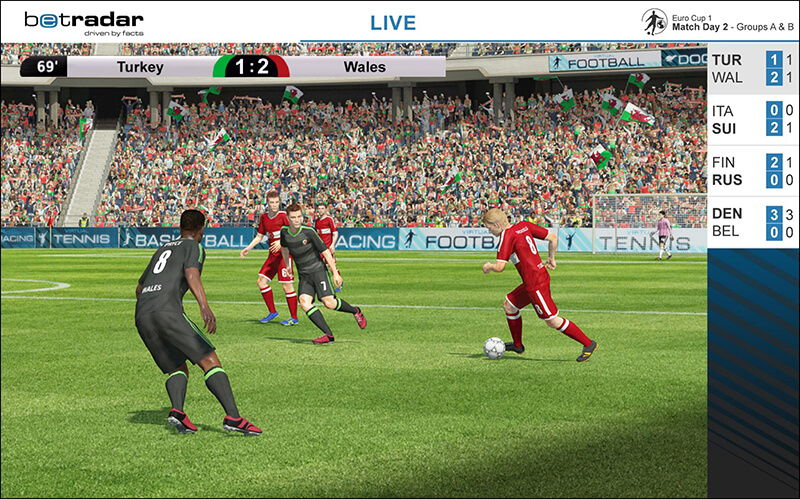Frank Wenzig, MD Gaming at Sportradar, has set out his view of the future of virtual sports betting. We are seeing the cancellation of much of the 2020 sporting calendar, with even the Tokyo Olympics under threat. At this time virtual sports betting is gaining industry attention, both as a response to the crisis of lost revenues and as a way to retain customer interest in the absence of live sports.

Not surprisingly, Betradar, Sportradar’s subsidiary, is stepping up to explain to a larger industry audience what its product can do and how the market can move forward.
Wenzig has given a webinar organized by iGaming Business, and published a contributor piece on EGR where he lays out his vision.
Betting is integral to virtual sports
As far as Betradar is concerned, betting is the sine qua non of virtual sports. Without betting virtual sports is not a commercial product.
That’s a fascinating distinction to make. Esports share some similarities with virtual sports and they have become a fast growing business dependent on audience rather than betting. Wenzig believes that the two are completely separate.
He may be right, but there is an old adage in sports betting; audiences make gamblers and gamblers make audiences. We can see this in the rapid growth of esports betting across Europe and Asia, and its early implementation in the US, especially in Nevada.
Betradar is firmly focused on the betting model, and that drives much of the product development and future evolution of the segment.

The company first adapted soccer to a virtual format. Each match is defined by the number of goals scored. A full soccer match with an average of 2.7 goals can be reduced to a 3.5 minute virtual match that retains the essential feature of the live game. It’s also short enough for fans to enjoy during the half-time break in a real game.
Other sports such as tennis are much harder to fit into this short window. Sportradar has a strategic partnership with Major League Baseball (MLB) in the US. Turning baseball into a virtual sports means longer games, but with the added virtue of allowing for in-play betting. This is the “next step” for virtual sports according to Wenzig.
Virtual sports expansion is horizontal and vertical
Wenzig identifies two growth directions for virtual sports. The company is adding new sports and expanding geographically into new jurisdictions.
Cricket is due for launch next year. This may seem strange in the US, but India is changing its laws to allow virtual sports betting. And India has hundreds of millions of cricket fans.
Law and regulation are big hurdles. Gambling regulators in jurisdictions such as the UK, New Jersey, and Malta have a flexible approach that embraces new technologies. In other countries, virtual sports can be ignored by legislators focusing on the big-ticket items like online sports betting and online casino.
However, this is changing, and more regulators are recognizing the validity of virtual sports betting as a complementary activity to sports betting.
Virtual sports fills gaps in betting portfolios
Wenzig explained that betting on virtual sports sees three peaks, just before a live game starts, during the half-time break, and immediately after a game finishes.
A second characteristic of virtual sports is that it is “24/7/365.” The always available element of virtual sports means that it fills gaps in the season allowing sports betting when the main teams aren’t playing. When they are playing live games, virtual sports can augment the events—the action can continue at half-time.
Of course, the current interest is because there is a huge gap in the schedule because of Covid-19 shutdowns. Wenzig points out that from a baseline where virtual sports produce 3% to 5% of a sports betting operator’s revenues, the last few days have seen this increase to over 10%.
In time virtual sports will be indistinguishable from live sports
The early 3D animations used for virtual sports are rapidly being replaced with motion capture technology.
Wenzig made a bold statement that highlights the longer-term potential of virtual sports:
“I believe that sooner or later you won’t notice whether a product is real or virtual, with natural movement perfectly replicated.”
A month ago it would have seemed ridiculous to suggest that virtual sports could replace live sports. But while people are in lockdown at home, with almost no televised sports, virtual sports can provide a temporary replacement.
The inevitable growth of a new audience will impact the post-crisis gaming environment. And what do audiences make? Gamblers.






